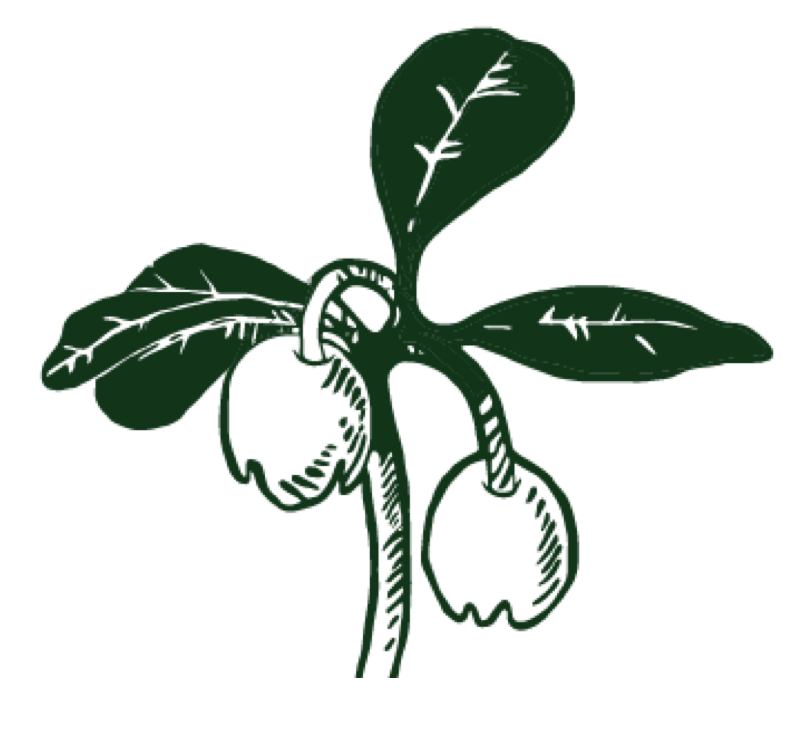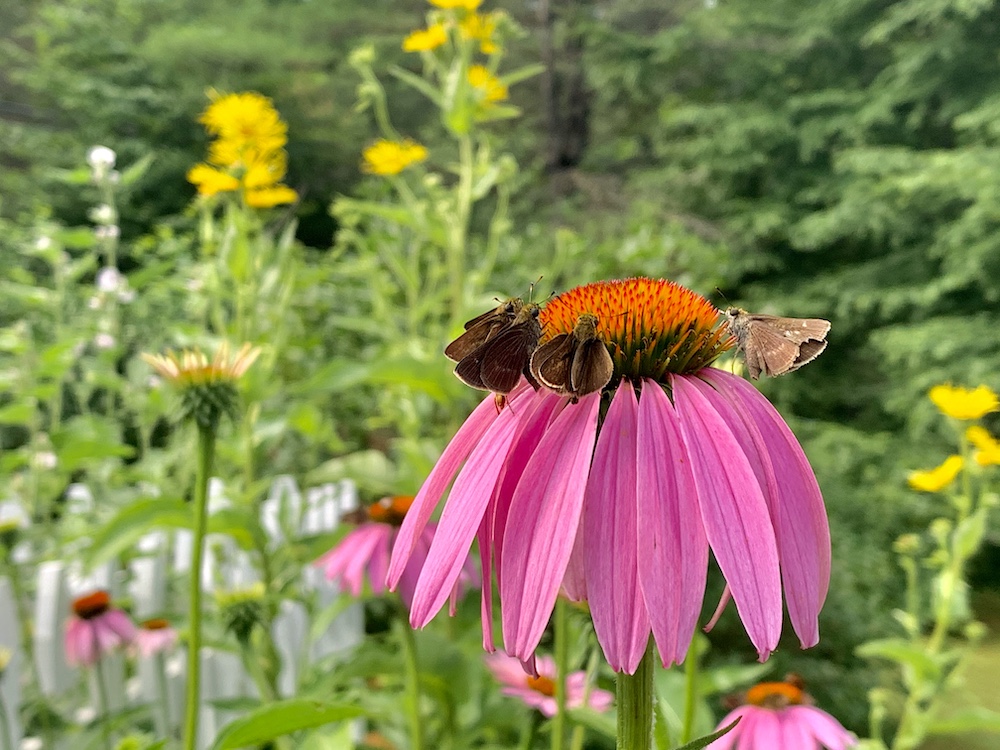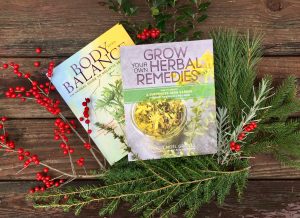Which Immune Herb to Choose?
When it comes to common respiratory infections – which are usually viral in nature – modern medicine doesn’t have much to offer beyond vaccinations*. Antibiotics don’t work for viral infections, and most over-the-counter care aims to suppress symptoms rather then support a healthy immune response or actually resolve the infection itself. While herbs are no guarantee, they often play roles that pharmaceuticals simply don’t, supporting a healthy immune response via actions that improve the body’s ability to fight the infection and easing specific symptoms.
Avoiding the cold and flu (or resolving it more quickly) is always of interest as the colder temperatures creep in – indoor air, dry air, increased exposure to others at school and via get-togethers, and reduced vitamin D exposure tend to make us more susceptible to roaming germs. With a global pandemic at hand, we’re even more concerned about keeping the immune system functioning as well as possible. But how to you choose from the dizzying array of herbs which ones work best for your situation? Each herb has its specialty.
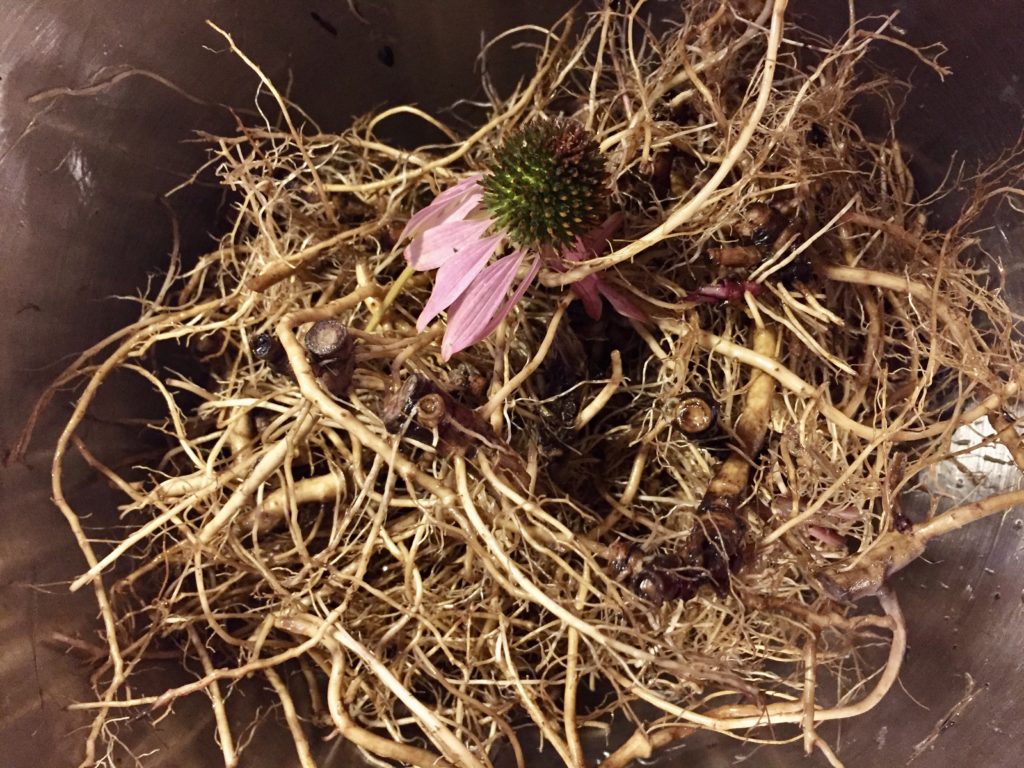
Echinacea (Echinacea spp.) Root, Leaf, Flower & Aerial Parts
When to Take It: In the battle of an infection, echinacea motivates your immune army to fight an infection with more gusto and helps clean the battlefield of wartime debris. Take it at the first tickle of viral or bacterial infection or times when you know you may be susceptible – such as while traveling, after exposure to someone who is sick, or when you’re sleep deprived. You should notice improvement within a day or two, if not within hours. Continue through the duration of the infection.
Key Actions:
- Rally Cry: Boost immune function including and white blood cells, improving its ability to fight both viral and bacterial infections
- Clean Up Crew: Support lymphatic system, including swollen lymph nodes
- Hand-to-Hand Combat: Weaken germs on contact, inhibiting their ability to break into your cells and replicate (great as a throat spray)
- Topical Analgesic: Numbing on contact (such as the throat)
- Echinacea also offers immune modulation, anti-inflammatory, and daily prevention support, though other herbs are usually better suited if this is your main goal.
Dosing: Relatively high and frequent doses when needed (generally not all season long), such as ½ to 1 teaspoon of tincture every 1 to 3 waking hours or 2 liquid capsules every 1-2 hours. The tea blends well with ginger, lemon, and honey, sipped throughout the day.
Cautions: People allergic to daisy-family flowers occasionally react to echinacea (less often to roots or tinctures). Immune stimulation sometimes aggravates flares in certain people with autoimmune disease. Good-quality extracts numb the tongue and make you salivate, which is unpleasant but harmless. While it’s not harmful to take it on a daily basis, other remedies are more appropriate.
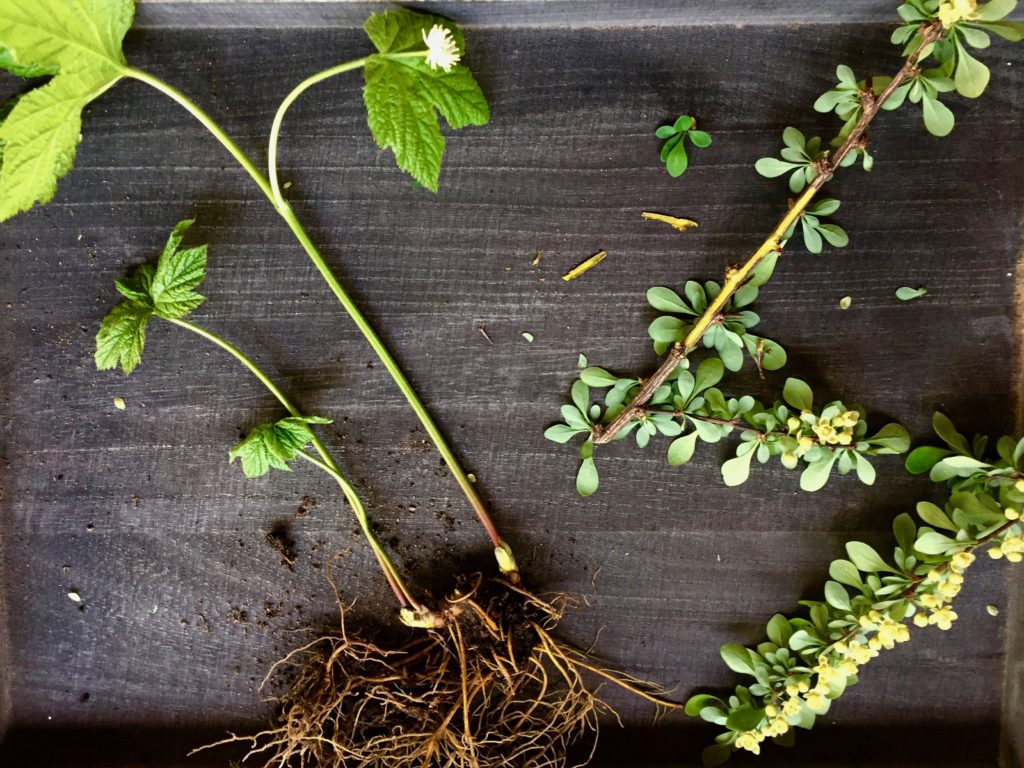
Berberine-Rich Herbs
particularly Oregon Grape Root (Berberis and Mahonia spp.) Root
Goldenseal is more potent but also at risk of becoming endangered. Limit or avoid use except in special cases, opting for organically cultivated roots. Barberry is closely related to Oregon grape root and can be used similarly; it's considered invasive in most states. Pictured Above: organically cultivated goldenseal and barberry
When to Take It: Berberine-rich herbs are generally often overused for the cold and flu – they’re really not the best herbs for these kinds of infections. That said, they are helpful on contact on the affected area in bacterial or fungal infections – for example, topically for skin infections, in an eye wash, throat spray, by mouth for gastrointestinal infections. They do not appear to have a direct systemic antibiotic effect, but they do systemically make bacteria less resistant to antibiotic drugs (confirm safety with your pharmacist and/or herbalist first) and possibly antimicrobial herbs. They also have anti-histamine-like and drying action on mucous membranes. Except in throat sprays or topically, it’s probably inappropriate and overused in combination with echinacea.
Key Actions:
- Antifungal and antibacterial (on contact)
- Dry Up and Tighten: Anti-histamine-like on mucous membranes (systemically and on contact)
- Synergist: Reduces bacteria’s ability to become resistant to antibiotics (systemically)
Dosing: Twice daily, ¼ to ½ teaspoon of tincture or via pill, or as directed on the label. The powder, tea, or tincture can also be added to sinus rinses and throat sprays.
Cautions: High doses long-term may disrupt gut flora. Ecological considerations surround many of these plants; goldenseal is the most commercially available but often threatened in the wild. Oregon grape root and barberry are gentler and more sustainable options. Barberry is invasive, illegal to cultivate, and technically illegal to harvest. If you harvest it, ensure you do not propagate the plant inadvertently. Berberine and berberine-rich herbs may affect liver enzymes, changing the efficacy of some pharmaceuticals.
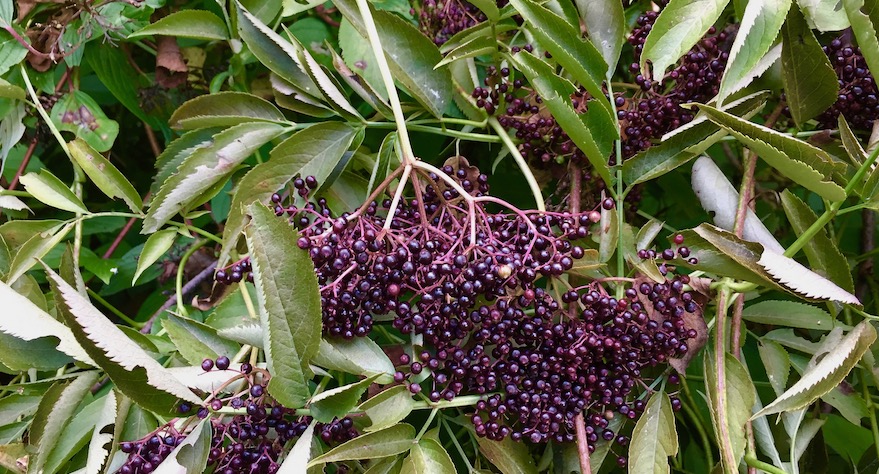
Black Elderberry (Sambucus nigra) Berries
When to Take It: Think of elderberry as a force field for prevention and very early stages of viral infection. It prevents the cold and flu viruses from attaching to cells, breaking in, and replicating. Take it. at the first sign of a viral infection such as a cold or flu or times when you know you may be susceptible – such as while traveling, after exposure to someone who is sick, or when you’re sleep deprived. Lab studies suggest that it may work similarly for various coronavirus species; however, no human tests have been done nor has it been tested specifically for the strain that causes COVID-19. It’s less useful once an infection has already taken hold.
Key Actions:
- Force Field Against Viruses: Helps prevent viruses from attaching to cells, replicating, and spreading
- Studies support its ability to reduce the duration and severity of the flu and common cold
- Anti-inflammatory
Dosing: ½ to 1 teaspoon of syrup every 1-4 waking hours from the first sign of infection. Lozenges, jelly (strain seeds out), tea, gummies, and other preparations can also be used, but tinctures usually have a short shelf life. It’s usually less effective later in in an infection. While it could be taken daily for prevention, astragalus and mushrooms work better to support immune system vitality and resistance directly.
Cautions: Raw berries are incredibly nauseating and moderately toxic; cooked or dried are generally very safe. Seeds can be nauseating, so strain them out of your final preparation and don’t use the powdered herb. In rare cases, sensitive people may find normal preparations nauseating or that it aggravates autoimmune flares, but it’s usually well-tolerated and safe for most people with autoimmune disease. It is among the safer and better tolerated immune herbs. Concerns around cytokine storm are largely unfounded, but always listen to your body – elder should never make you feel worse.

Elder Flower (Sambucus nigra)
When to Take It: Elder flower is a gentle yet profound remedy for fevers and histamine and work well in combination with elderberry. Use it for mild fevers, in formula alongside other immune herbs, and when seasonal allergies or allergy-like symptoms are present. Among diaphoretics it’s one of the safest and most kid-friendly.
Key Actions:
- Reduce excessive histamine response
- Diaphoretic: enhances the body’s fever response, making you sweat and breaking the fever more quickly for faster, more effective resolution of infections
Dosing: Via hot tea (best for diaphoretic effects), or syrup, two or more times daily as needed
Cautions: Generally extremely safe and well tolerated but avoid excessive stems (nauseating and potentially toxic); dried elder flowers are best tolerated

Astragalus (Astragalus propinquus, syn A. membranaceus) Root
When to Take It: An immune system tonic, astragalus works best taken regularly long-term for prevention support or for people with lingering, low-grade infections or weak immune function. It modulates and strengthens the immune system without overstimulating it so that it’s better able to respond to infections.
Key Actions:
- Training Camp: Immune modulator, rich in polysaccharides, improves immune system and communication so that it’s more efficient and doesn’t over- or under-react
- Nurturer: Gentle, building support for the immune system, useful in weak immune function, people who can’t get sick or have lingering infections they can’t kick, and in convalescence
- Long-term use may reduce food and seasonal allergy response and autoimmune disease
Dosing: Relatively substantial daily doses, best as a powder added to food, simmered root in hot water (great in tea, broth), though it can be taken as a tincture or capsule
Cautions: Generally well tolerated, but it’s less useful in early stages and acute infection.
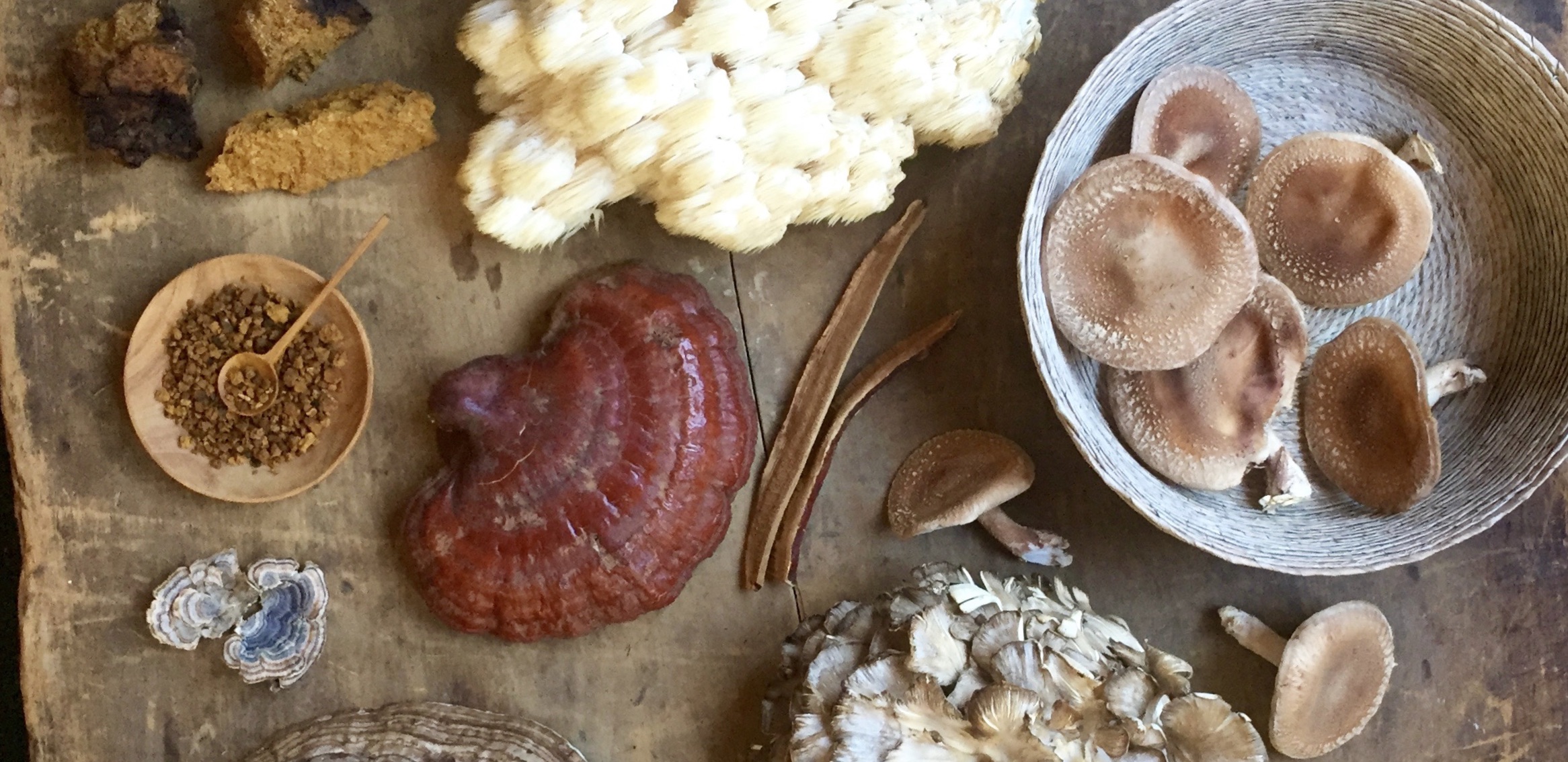
Medicinal Mushrooms including Reishi, Shiitake, Maitake
Mushrooms also contain polysaccharides and can be used similarly to astragalus. One key difference is that the beneficial polysaccharides are trapped in a tough chitin fiber matrix, so grinding the mushroom and gently simmering it for several hours is preferable. Also most mushrooms need to be cooked in order to be safe and effective to consume; some otherwise safe mushrooms will make you sick if eaten raw. Certain mushrooms like reishi and cordyceps have tonic effects for the lungs and oxygen utilization. Reishi is particularly promising for long-term allergy support, too. However, some people are allergic to or do not react well to mushrooms, so listen to your body. Otherwise, they’re quite similar to astragalus (above) in use and dose.

Ginger (Zingiber officinale) Root/Rhizome
When to Take It: This mover and shaker is a simple but profoundly useful kitchen remedy. It can be consumed preventatively and during infections to improve resolution and has various beneficial actions for different types of infections. Think of it particularly when the body is cold or sluggish. If I’m coming down with something, I try to take the day off to sleep and rest while sipping lots of ginger-lemon-honey tea. If I have to work, I bring a thermos of it to sip throughout the day.
Key Actions:
- Bring the Fire: Warms the body and supports vitality, stimulating circulation, sweating, mucus discharge, and digestive acids, so the body is better able to mobilize and fight infections
- Diaphoretic: Like elder flower (above), it enhances the fever response to break a fever and resolve infections more rapidly, especially when consumed as hot tea
- Antimicrobial & Antiviral: Fresh ginger has some direct antimicrobial effects for the cold, flu, and stomach bugs
- Anti-Emetic: Reduces nausea, especially if honey or sugar is added
- Anti-inflammatory: Systemic anti-inflammatory and also reduces the pain of sore throats when sipped, especially with added honey
Dosing: As much as you can handle! Fresh ginger is more effective than dried for infections. Try it juiced, tea (simmered or infuse grated ginger or thin slices for an hour or more in an insulated thermos), grated or pureed into soup and broth, etc. For sore throat, cough, nausea, or stomach bugs, consider ginger-lemon-honey tea, ginger syrup, or ginger-infused honey. For stomach bugs, add grated ginger to miso or chicken broth. Tincture and pills may work, but food-like forms are generally better.
Cautions: May be too hot for some people, may irritate sensitive digestive systems. Moderately blood thinning.
When to See a Doctor
It’s never a bad idea to call your doctor to check in, but in particular…
- If you have pre-existing conditions like asthma, heart disease, the patient is an infant, elder, or you are on medications, call your doctor’s office for advice
- If your infection isn’t resolving or is becoming more severe, seek professional guidance
- If you have difficulty breathing, feel pressure on your chest, or have blue-ish lips, go to the emergency room
- If you have persistent diarrhea; dehydration can be life-threatening, call your doctor and/or go to the emergency room
- If you are feeling mentally confused, call your doctor and/or go to the emergency room
- If you have a fever over 103°F, call your doctor
- If you think you may have contracted COVID-19, get tested and follow current CDC guidance on quarantine time and masking. Give yourself plenty of TLC during the acute and recuperative phases.
- If in doubt, call your doctor
Additional Support
These are just a few of the most common and useful immune herbs, but there are so many more! Lung-opening tonics like elecampane, mullein, and yerba santa. Warming, mucus-moving kitchen antimicrobials like garlic, onion, oregano, thyme, and rosemary. Cough remedies like wild cherry bark or horehound. See the Health Concerns section of my blog at WintergreenBotanicals.com to learn more about different immune and respiratory herbs. Also, be patient and willing to substitute since the global pandemic has put intense pressure on immune herb supply, shops, and stores.
Adequate daily intake of vitamin C, zinc, vitamin A, omega 3s, selenium, and other nutrients via food and supplements may also support immune resilience and reduce infection severity. Note that it is possible to overdose on vitamin A, selenium, and zinc; stick to the RDA and stay below Upper Level Limits unless under the guidance of a health professional. The Linus Pauling Institute Micronutrient Information Center offers helpful guides for individual nutrients.
* About Vaccination
When this article was originally written in 2020, vaccinations were not yet available for COVID-19. The data is clear that vaccinations are our best option to prevent COVID-19 infection and/or severe illness.
Are they perfect? No. Do I trust the pharmaceutical companies and government 100%. Definitely not. Is our media incredibly biased and agenda driven on all sides? For sure.
But vaccines DO generally work well with minimal-to-no side effects for most people. COVID-19 can be nasty with long-reaching system-wide damage that may or may not resolve with time. The exact effects and severity of COVID vary widely person to person. But I am seeing firsthand and learning from family members who work in ICUs the vast difference it makes being vaccinated or not, especially in vulnerable populations within a stressed medical system.
All that said, I do support people's right to question and choose. It's totally outside my scope as an herbalist to tell you to get vaccinated or not. But herbs and nutrition play a fantastic role alongside vaccination for those of us who are vaccinated and provide some support to those who choose not to get vaccinated as well. In all cases, these natural options only further empower us in our wellbeing. <3
Learn More
Check Out the Immune Hub on my Blog
Did you enjoy my article and video?
Order my Books or Register for Classes!
Study Herbal Medicine with Me ~ Series & Individual Online Classes
Follow me on Instagram and Facebook
Clinical herbalist Maria Noël Groves sees clients and teaches classes at Wintergreen Botanicals Herbal Clinic & Education Center in Allenstown, New Hampshire.
The statements made on this blog have not been evaluated by the FDA and are not intended to diagnose, prescribe, recommend, treat, cure, or offer medical advice. Please see your health care practitioner for help regarding choices and to avoid herb-drug interactions.
This article originally appeared in Herb Quarterly magazine.Winter 2020.
